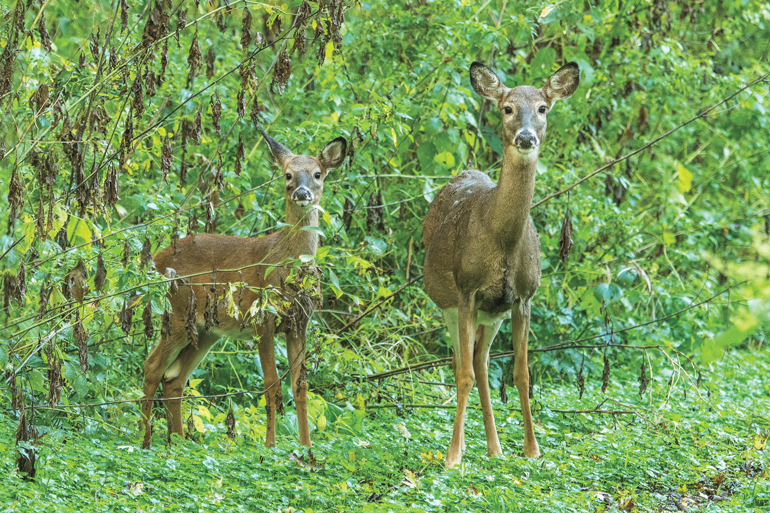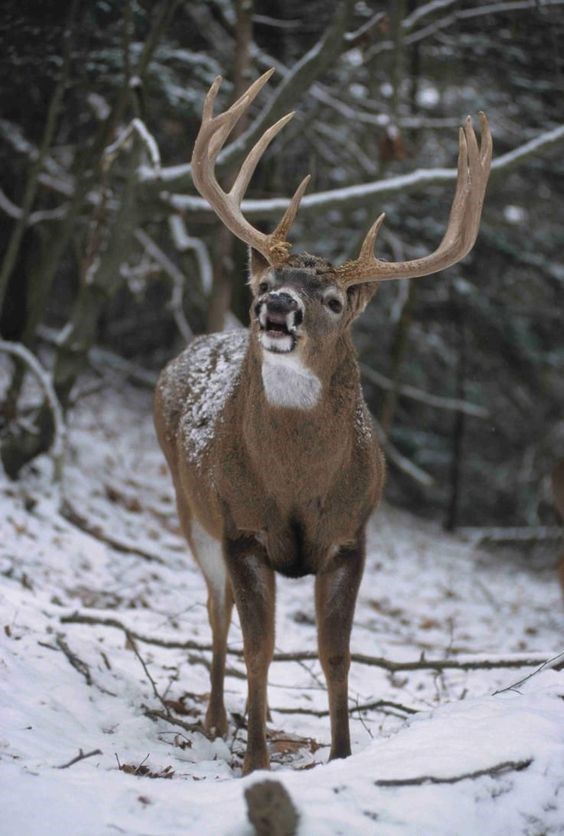CWD: What Have We Accomplished and What Lies Ahead?
Are deer-reduction efforts doing more harm to the general whitetail population than the disease itself?

More than 50 years after Chronic Wasting Disease (CWD) was first identified, it seems we aren’t any closer to giving hunters the answers they want.
First observed in 1967 in mule deer at a government research facility in Colorado, CWD is a prion disease. A prion is a type of protein that can trigger normal proteins in the brain to abnormally fold. These misfolded prion proteins are toxic and infectious, but what causes the protein misfolding remains a mystery. Potential causes are often thrown around, but the science to prove them is scant.
CWD causes a massive amount of fear and frustration in academia, among hunters and throughout state wildlife agencies. Why the latter? State wildlife agencies are heavily funded through hunting-license sales. With whitetails representing the most sought-after game species in the U.S., a threat to them ultimately represents a threat to the funding of the agencies — and, ultimately, many other areas of natural-resource management and conservation.
In other words, whitetail revenue funds far more projects than those that simply impact deer!
Facts & Figures
Hunters are clearly fearful of what CWD, a disease they are told is 100 percent fatal in deer, will do to deer hunting. A recent study conducted in Tennessee, a state that discovered CWD in December 2018 from 10 hunter-harvested whitetails in the southwestern part of the state, is proof of that.
Researcher Bonner Powell and his associates showed that hunter participation can sharply decline based on fears of decreased deer densities and deer sightings, as well as a perceived danger from eating venison from infected animals. Of 66 hunters surveyed at Ames Hunting Club, 80 percent felt CWD will negatively impact hunting in West Tennessee. Additionally, 85 percent expressed concerns about eating meat from harvested deer and said they would not consume meat from deer taken in the area unless they were tested for CWD.
Membership at Ames Hunting Club, one with a reputation for maintaining great deer management and hunting, decreased 44 percent from 2018 to 2019. From a state agency perspective, a potential 44 percent hit in license revenue represents the basis behind their fear and sense of urgency.
Science Says …
Where does academia come into play? Consider that everyone looks to university researchers and their expensive private, state and federally funded research for answers to our questions and concerns. There are clear signs of frustration among researchers. I recently reached out to a leading researcher at the University of Wisconsin, only to be told, “Hi, Jason. I think I will pass. I’m afraid I don’t have any encouraging or optimistic comments to offer.”
That’s unfortunate, as his CWD research is funded by state and federal money, student tuition, research grants and private contributions. My position was that bowhunters read publications such as Petersen’s BOWHUNTING far more often than scientific journals, as these titles are far more effective at communicating the latest science to hunters.
Back to the point: Have we learned anything recently? Has CWD caused significant reductions in deer numbers, or are our responses to CWD to blame?
Researchers, including the one who declined to comment, repeatedly state that the prevalence of CWD will increase and population declines will result. I couldn’t agree more, but in a country where ecological dysfunction is in excess, I believe the discussion needs to focus on the underlying cause. In addition, how can we continue to invoke fear of a disease that will reportedly decrease deer abundance across the country when so many interest groups report instances of whitetail overpopulation?
“Deer farming” always takes the brunt of the blame when it comes to the spread of CWD. Truth is, whether you support deer enclosures or not, this practice can be done either in an ecologically sustainable manner or in a way that interrupts the ecology, causing dysfunction (overabundance). We see the same dysfunction outside deer farms!
Although CWD was first observed and identified in a publicly owned and funded wildlife research facility, private owners who fence in their properties take much of the blame for the disease’s spread. Countless publications begin their CWD discussion by stating that “CWD was first observed in 1967 in a captive deer facility,” which infers it was first observed in a deer farm.
Where to Next?
As someone who has dedicated much of his career to whitetails, I consider all fatal, transmissible and degenerative whitetail diseases of serious concern. I’m also in favor of responsibly investing in furthering our understanding of the disease and determining if our management efforts are really benefiting animals I deeply care about. Are we making progress, or just throwing away good money?
With 53 years of research behind us, we still haven’t delivered on the “why” of CWD. Some will argue that immediate and rigorous outbreak surveillance and containment efforts have saved thousands of deer. They steadfastly maintain that CWD has caused rapid declines in deer numbers. Has it, or are the hired sharpshooters brought in to do what hunters can’t or won’t actually to blame?
The same university researcher who declined to offer optimistic comments once said, “Until we have a vaccine, there are no easy solutions.” Delivering a vaccine to a substantial percentage of a wild deer population, and doing it over a long period of time to ensure its effectiveness, would require an almost unfathomable amount of money and manpower. Even then, there is no guarantee of its efficacy.
Given that, I sometimes wonder whether we are more concerned about CWD’s economic impact on natural-resource agencies and publicly funded university research than the deer herds themselves.
As a biologist, I understand you can’t control or predict nature. When it comes to CWD, I also understand it can be frustrating to continually offer up little of substance to the hunters who fund much of the research and management of wildlife. I’m afraid that, with CWD, our human desire for certainty has led us to ignore the notion that nature is self-regulating, self-organizing and self-healing. Are we attempting to control the ecological dysfunction that we caused? Has nature “got this”?
Some researchers disagree, but it sure doesn’t seem like we have it!
You may also like
-
Preserve Wisconsin’s legacy: Renew the Knowles-Nelson Stewardship Program | Opinion
-
80 Years of Wisconsin Deer Hunting Experience
-
Another Democrat Gun Grabber Calls for Political Violence, This Time with ‘Actual Weapons
-
Dark Web of Taxpayer’s Money Funds Anti-Gun Organization
-
CWD INFORMATION LISTED BELOW CHRONIC WASTING DISEASE (CWD)
